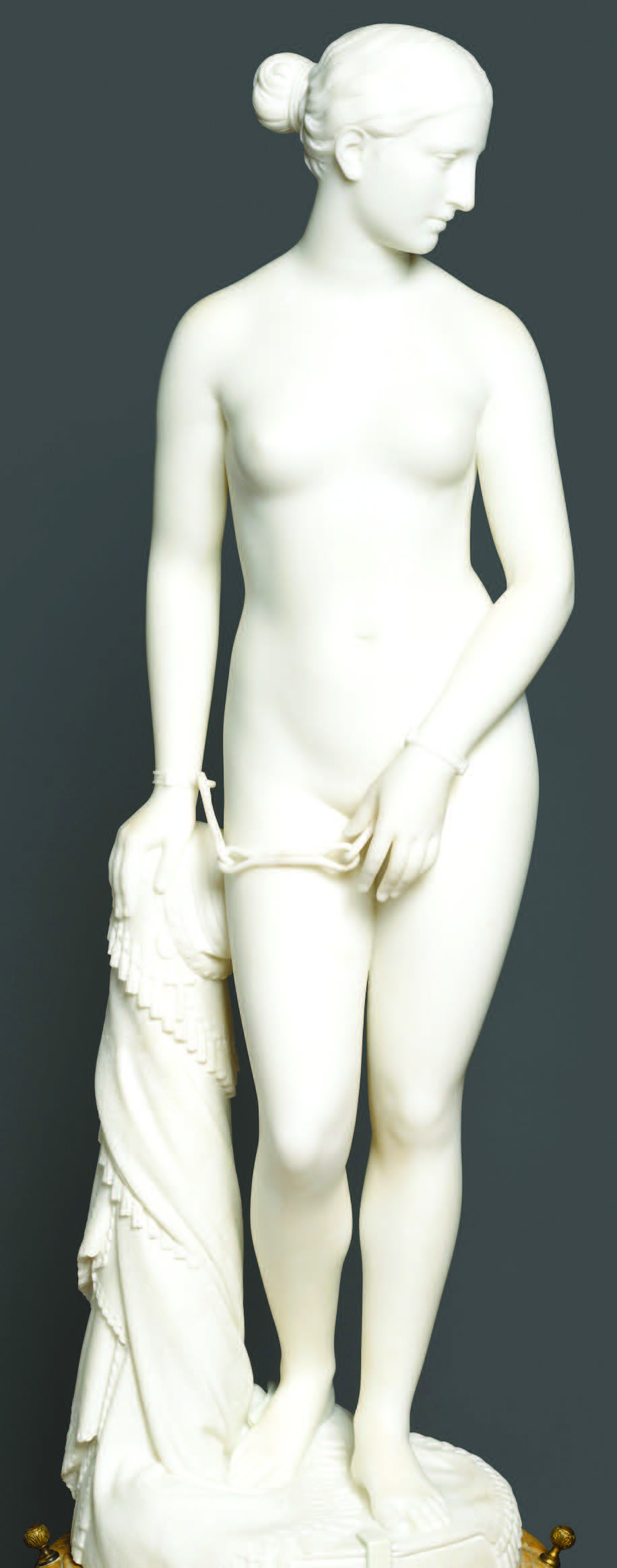 Now on view at the de Young is a two-thirds-scale marble version of the American sculptor Hiram Powers’ iconic masterpiece, Greek Slave (ca. 1873), the most famous sculpture of the 19th century and one that helped bring slavery in America to an end.
Now on view at the de Young is a two-thirds-scale marble version of the American sculptor Hiram Powers’ iconic masterpiece, Greek Slave (ca. 1873), the most famous sculpture of the 19th century and one that helped bring slavery in America to an end.
Drawing inspiration from the renowned Hellenistic marble sculpture of the Venus de’ Medici (1st century BC) in Florence’s Uffizi Gallery, Powers completed his original plaster in 1843. His Florence studio subsequently carved six full-size and three two-thirds-size marble versions for British and American clients.
Powers’ subject is a shackled Greek woman taken as a prisoner by Turkish Ottoman forces during the Greek War of Independence (1821–1832) and publicly displayed for sale in a slave market in Constantinople (Istanbul). The young woman’s fringed shawl and hat are placed on the post adjacent to her right hip, as are the discreet locket suggestive of broken familial bonds and a Christian cross symbolic of her faith. While the Venus de’ Medici represents an idealized, mythological subject, Powers’ Greek Slave explicitly depicts a contemporary Greek woman.
Greek Slave was one of the first full-length fine-art nude sculptures exhibited publicly in the United States, and it generated enormous controversy as well as popular and critical acclaim. When the second and third full-size marble replicas toured the United States between 1847 and 1851, nearly 100,000 people paid 25 cents each to view the sculpture. While the Presbyterian minister Lyman Beecher—the father of Harriet Beecher Stowe, author of Uncle Tom’s Cabin—declared the statue to be indecent, most viewers took their cue from an explanatory pamphlet published by Powers’ tour manager and embraced her as an exemplar of Christian faith and virtue in the face of great adversity
Powers’ primary theme—the modern Greek struggle to re-establish a democracy in the country that created the first democratic republic in the Old World—had particular resonance in the United States, which established the first democracy in the New World. However, numerous commentators also explicitly linked the enslaved status of Powers’ white subject to the contemporaneous enslavement of African Americans. Greek Slave soon was adopted as a potent propaganda symbol by the international abolitionist movement.
Early in his career, Powers had opposed the “rabid abolitionists,” but by the mid-1850s, he declared of slavery, “I think it high time to oppose it tooth and nail everywhere.” Embodying both the high ideals of democracy and the harsh realities of slavery, Greek Slave became a beacon and a lightning rod for viewers during the protracted political and social turmoil that culminated in the American Civil War (1861–1865).
For information about visiting the de Young, please visit: deyoung.famsf.org
Recent Comments